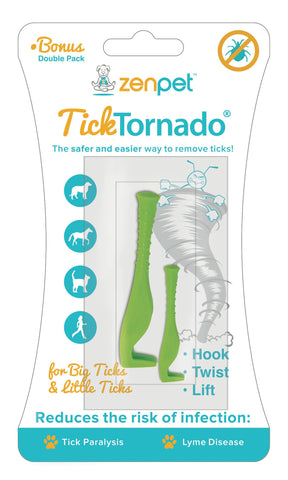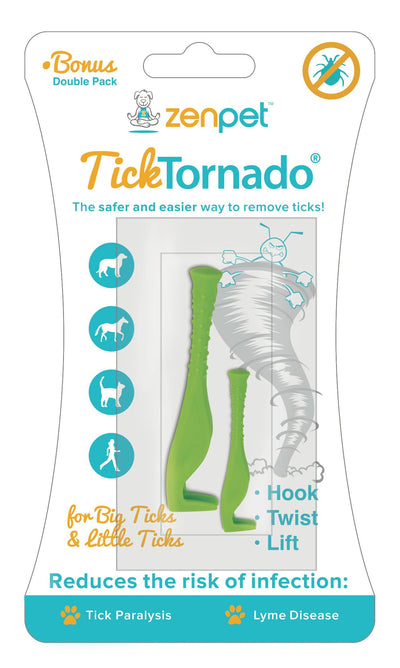What is a Tick?
A tick is a small ectoparasitic organism that lives on the outside of an animal’s body. Ticks can be found in all regions around the world, and all parts of the United States but they tend to be most common in the Northeast. Ticks live in piles of brush, and tall grass and are the most active during the warmer months of the spring and summer, but continue to be active during the fall as well.
Now that the days have grown longer, you will probably find yourself spending more time outside with your dog, or you may allow your dog to stay outside by themselves longer. It is important to check your dog for ticks every time they return from the outdoors, as even a dog who only goes out to use the restroom could get bitten by a tick.
Why are ticks dangerous to my dog?
Ticks are carriers of bloodborne disease, such as Lyme disease. Lyme disease in dogs, can cause depression, fever, joint or bone deficiency, loss of appetite, swollen lymph nodes, and possibly renal failure. Though Lyme is the bacterial infection most commonly thought of when talking about ticks, there are several other potential threats that can come from a tick’s bite. Rocky Mountain Spotted Fever can cause pain, lethargy, vomiting, and at the worst, death in dogs. Ehrlichiosis is another common disease found in ticks. The symptoms of this infection include fever, lethargy, loss of appetite, enlarged lymph nodes and possibly abnormal bruising.
Most common places to find a tick on your dog’s body:
Front legs: The thin skin under your dog’s armpits is dark and warm which makes it a perfect place for ticks to hide.
Inner Groin: Similar to your dog’s front legs. The skin around their inner flank is also a place that ticks love to attach themselves.
Toes: The skin between your dog’s toes is an easy place for ticks to latch on because it is low to the ground where ticks often hide. Ticks here can be difficult to see, so pay close attention when examining this area.
Ears: A dog’s ears have thin folds of skin that are ideal for ticks to hide themselves. This area can also be tricky as it is hard to detect ticks, and often can be difficult to remove.
Eyes or Eyelids: When your dog sniffs the ground with their snout, ticks can easily climb up their nose to attach to the skin around a dog’s eyes or on the eyelid. The close proximity to your dog’s eyes makes this spot particularly difficult.
Under Collar or Harness: Lastly, don’t forget to check underneath your dog’s collar or their harness. Ticks like hiding here as well because the fur is usually thick around the neck and they can hide themselves in the warm darkness under the dog’s collar.
How to remove a tick if I find one
If you check your dog and find a tick, follow these steps to make sure you are able to properly remove the parasite without causing any stress or harm to your animal. Wearing a pair of latex gloves, examine the area. With a pair of very fine point tweezers, grab the tick as close to the dog’s skin as possible. Once you have the tick, gently but firmly pull straight up with steady hands. Avoid a jerking motion, because you don’t want to rupture the tick, or leave the tick’s mouth parts embedded in the skin. Next, clean the area with alcohol to disinfect the wound.
Another very simple solution to tick removal is a handy tool called the Tick Tornado, a tweezer like device which utilizes a “hook and twist” method for easily pulling ticks off of your dog. Just hook the parasite and twist the Tick Tornado to remove the tick’s mouth from the dog’s skin. The device comes in two sizes for both small and medium to large sized ticks. It’s also indestructible and easily disinfectable due to its heavy duty recycled plastic construction, which means it can be reused infinitely.
When you have successfully removed the tick, either flush it down the toilet or keep it trapped with a piece of tape before you dispose of the tick in the trash because you don’t want the tick to crawl out of the waste basket and reattach itself to someone else. Finally, reward your dog for being calm and allowing you to remove the tick. Monitor the bite area for the next few days. Some redness, and skin irritation will be normal but if those symptoms worsen or you notice the area oozing pus, contact your veterinarian to seek the appropriate method of treatment.
What can I do to prevent my dog from getting bitten by a tick?
There are a ton of topical products on the market that you can treat your dog with, in order to kill ticks and other parasites before they have the chance to harm your dog. Talk with your veterinarian to determine which product they recommend.
Additionally, there is a wide range of apparel for your dogs that can also protect them from any insects or parasites that might try to hitch a ride. Insect Shield is a great company that makes T-shirts, gaiters, tank tops, and bandanas that are actually coated with skin safe insect repellent. Put the machine-washable garment on your dog, and send them outside to play knowing that they will be kept safe.The repellent is non toxic so it’s not harmful to dogs, and there is no odor so it doesn’t bother your senses either. The coating on the fabric will also last you up to 30 washes before needing to be replaced.
Aside from medication and clothing, it is also possible to make some small changes around your house to prevent ticks from becoming a problem.
One of the most obvious solutions would be to rid your property of wild animals that may be carrying ticks, and then passing them to your pets. Once you’ve accomplished that then treat the yard with a product that kills ticks, and their eggs. If you choose this method, make sure to do the proper research to figure out the most appropriate product to use, and make sure you understand how the product will affect the surrounding environment.
You can also create an area of about 3 ft. between your yard and the woods. To do this, you can use mulch, gravel, or wood chips.
As summer approaches, so does the looming threat of tick season. For this reason it is important to stay vigilant, and check for dog for ticks any time they have been outside.















Leave a comment